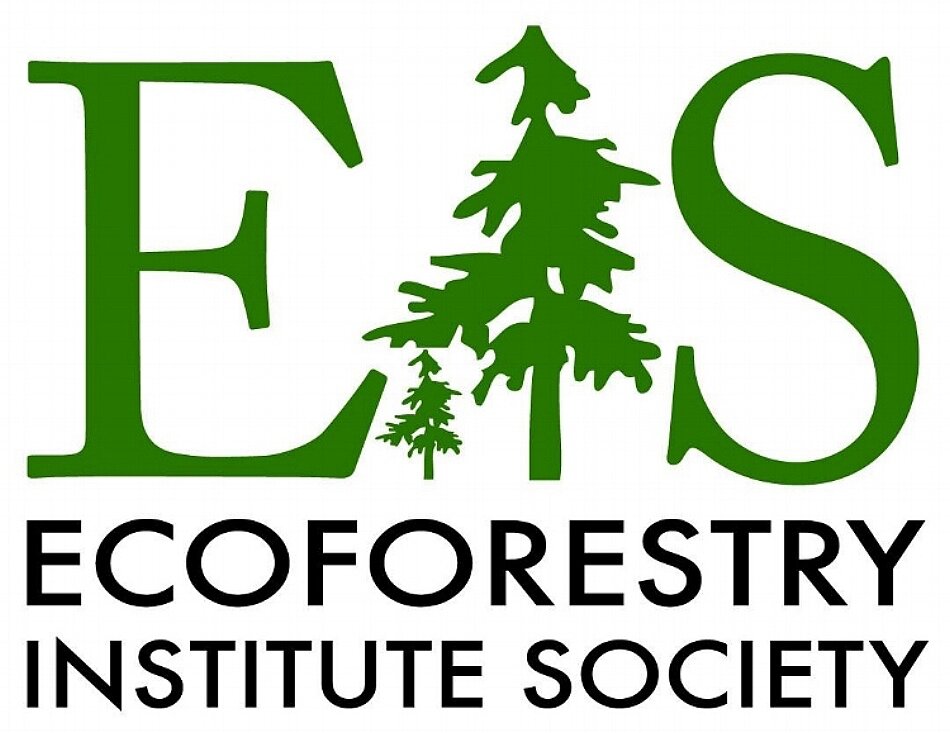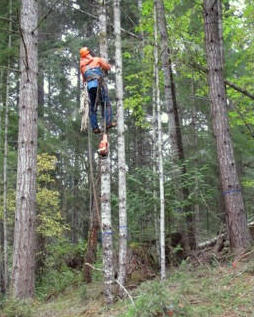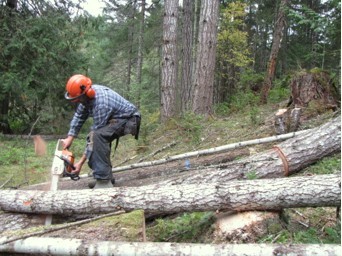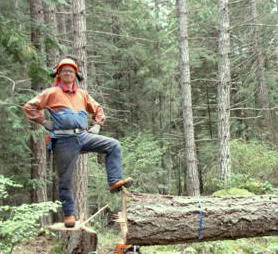Timber Harvest
In Fall 2017, the Ecoforestry Institute Society completed the first Wildwood timber harvest in 10 years. This harvest took place during four days of harvesting from October 14 to 30 when the fire danger was low, the soil not saturated and outside the nesting season for the resident bird population. 63 trees were felled with 24 (38%) of them classified as danger trees situated near buildings and along the main road. The selection of non-danger trees was based on a criteria-ranking developed by the EIS Forest Management Committee, of which the overarching principle is to support the ecological integrity and functions of the forest.
The logging technique was designed to minimize damage to the forest and to be affordable for small woodlot owners. Trees were hand felled by chainsaw, then towed by a farm tractor with a light weight logging arch sporting a small hand-driven winch. Many thanks to Fred Green for the use of the farm tractor and to Jay Rastogi for the logging arch.
The merchantable harvest volume netted 35m3 and the crew recorded details for every cut tree such as selection rationale, species, GPS coordinates, dbh, stump diameter, and height. Single tree to group selection within 100m of the mill site opening (relatively geographically concentrated to avoid more wide spread disturbance) was 69% of harvest volume. Trees were bucked to 8,12, 16, 20 ft lengths to maximize grade value of milled cuts. Approximately 9 cu meters were milled to net 2700 board feet of lumber for the Homestead renovation project. Tops and branches were left on site to increase ecologically important “dead” wood volume on the forest floor, adding nutrients to the soil and habitat for beneficial insects.
Thanks to the volunteers: Peter Jungwirth, Barry Gates, Erik Pikkiila, Bruce Hepburn, Michael Hollihn and Christopher Walther. Photos above by Bruce Hepburn
Our first milled lumber! - Photo by Kathy Code





